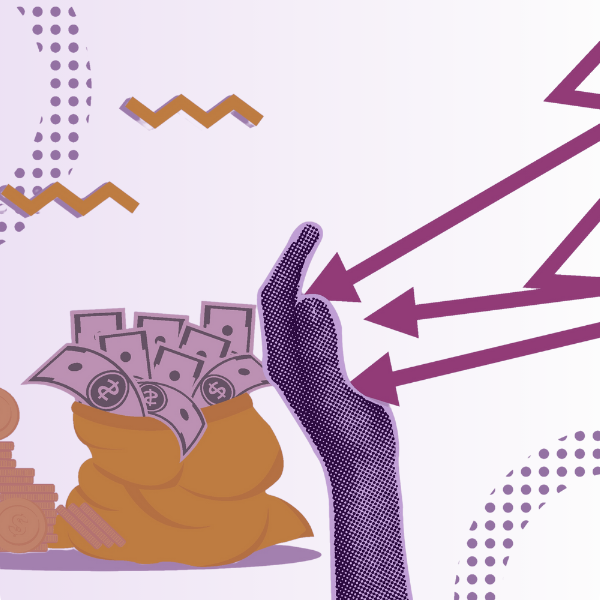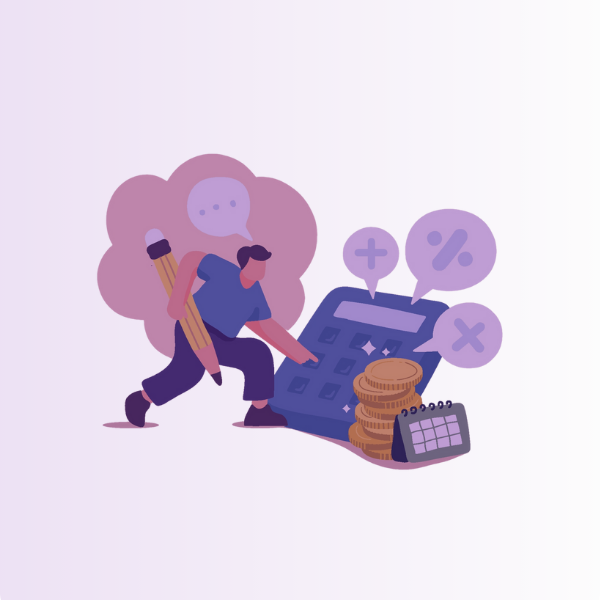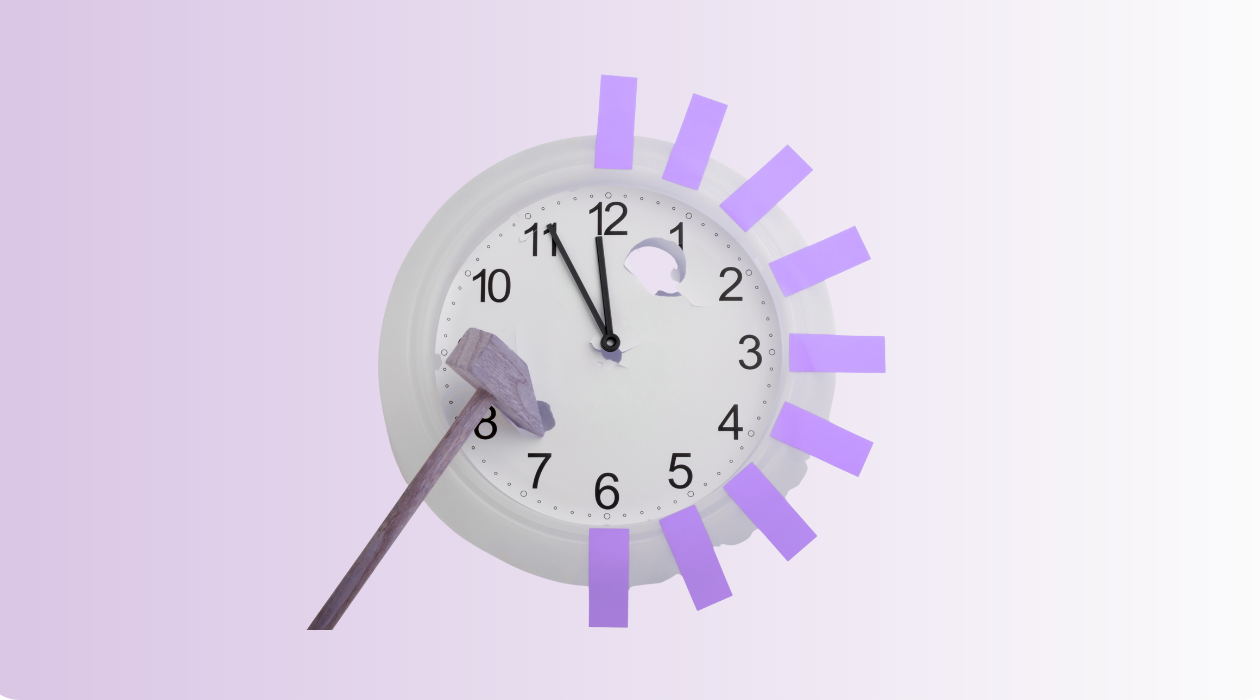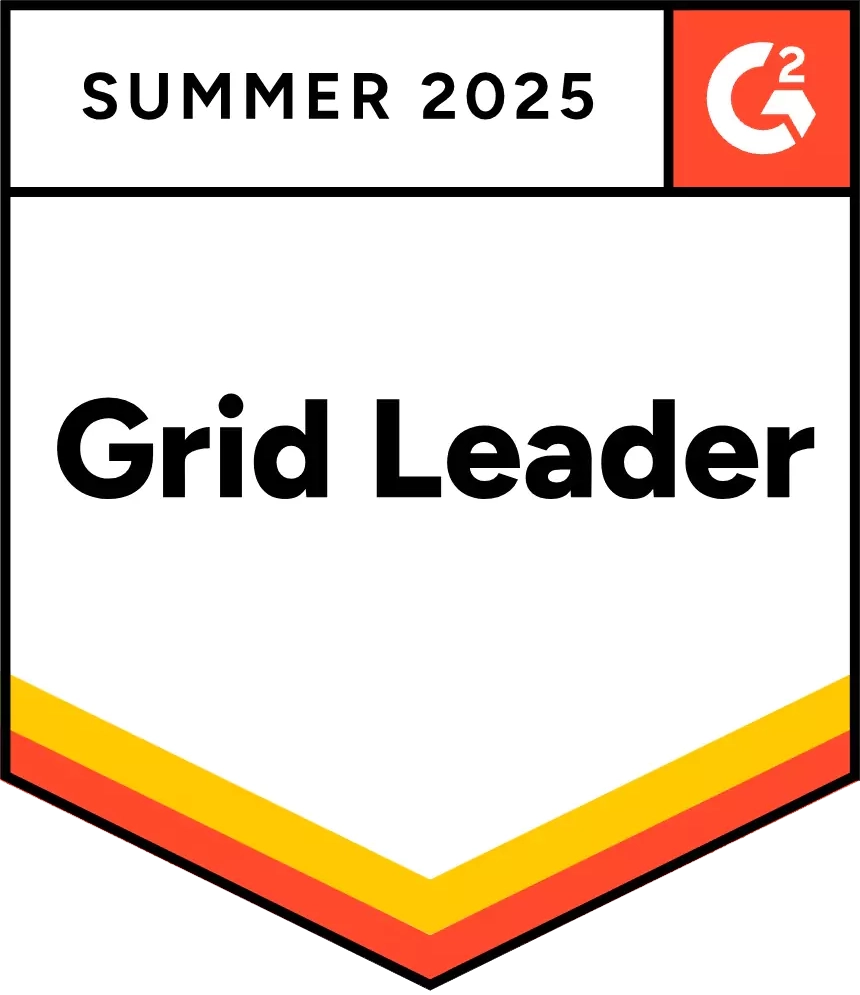Imagine this: Jake runs a well-established equipment rental company with over a thousand monthly orders, sounds like business is flourishing right? Yet somehow, they face a challenge every quarter: profits that do not add up. Jake digs deeper into this issue and discovers the many culprits: uncharged late fees, unlogged equipment maintenance, and unbilled overtime hours.
These expenses are often labelled “invisible”, but they are not so invisible after all! All of them bear some form of financial cost. They have a tangible snowball effect that disrupts not just your everyday rental operations but also your bottom line and financial stability.
For any equipment rental business, staying on top of its financials and identifying gaps is the key to consistent ROI. Identifying revenue leakages is not easy! It requires precision and the ability to analyse every revenue touch point in detail.
Revenue is the primary driver of any rental company, and managing rentals inherently carries the risk of unexpected, unnoticed revenue leaks. Let’s help you understand how to avoid revenue leakages in your rental business.
Ready to Boost Your ROI?
What is revenue leakage?
Revenue leakage is the potential loss of revenue due to process inefficiencies, human error, or a lack of visibility across operations. It’s the gap between what your rental business should earn and what it collects. It hits your rental revenue when:
- Rental extensions or overtime usage are not updated in invoices.
- Damaged or missing equipment is not charged to customers.
- Discounts or manual pricing adjustments go untracked.
- Assets sit idle or underutilized due to poor scheduling.
- Maintenance and service costs are not factored into billing.
Revenue leakage does not occur solely because of damaged or idle equipment; it results from the highly fluid nature of rental operations. Rental workflows are not just complex. They involve multiple processes, such as order booking, delivery, payment collection, and tracking late fees, which can make your rental business more prone to revenue leakage.
According to a report, unbilled hours and service charges incurred while chasing a customer for the rental contribute to revenue leakage. The time spent on this can be twice as much as the rental itself.

How do you identify revenue leakage in your rental business?
The EZRentOut team interviewed the owner of DomCo Direct, based in New Jersey. Its rental equipment is managed strategically, with a focus on minimizing idle equipment and avoiding renting equipment that is not in use. Small contractors mostly rent underused and unused equipment.
“On a smaller job, nine times out of ten, it’s rented out,” says the owner of DomCo Direct.
This idea lays the foundation for minimizing revenue loss from idle equipment.
The following are some ways you can identify revenue leaks in your rental business:
1. Track asset utilization
Every piece of equipment sitting idle becomes the biggest source of revenue loss. Rental businesses often fail to allocate assets accurately to their intended use due to poor asset tracking. This happens when some assets are constantly used even though sufficient resources are available to serve targeted purposes.
Large-scale rental businesses are keen on staying up to date on their asset utilization rates to optimize ROI. Assets must be rented out based on whether they are regularly used. But first of all, it’s critical to note whether this is already happening in your rental business, as a lack of asset utilization can increase your revenue leakage by more than you can remember!
Tracking asset utilization helps generate deeper insights into idle time and utilization percentages to inform rentals. This way, you know exactly where your assets are being used the most and how. Here are some probable causes of a drop in your asset utilization:
- Inaccurate asset status updates, e.g., marking certain assets “under-repair” or “under-maintenance,” increase downtime.
- Undefined and unidentified maintenance time slowly eats into revenue because of a lack of metrics to differentiate time spent under maintenance from time spent in rental use.
- Inability to track asset utilization trends monthly and quarterly
Example: If a generator has been rented out for only 40 days in a year while similar units average 120 days, that’s a clear utilization gap and potential lost revenue.
2. Audit your billing processes
Inaccurate or untracked billing invoices can significantly increase your revenue leakage. A small billing error can have a domino effect as multiple minute errors slowly add up and eat into your revenue. This is especially true for rental businesses where departments suffer from data silos and do not have a consolidated platform that helps them record bills and also charge clients from one place.
Here’s how you can prevent these issues:
- Digitalize invoices: Capture all payment details digitally, including pick-up and delivery fees, the actual order cost, and late returns. Even a single missing line item can significantly impact your bottom line.
- Review billing cycle: Ensure that there are no gaps between order booking, checkout, and billing. A missed charge can easily go unnoticed and add to your expenses.
- Reliance on manual billing techniques: Manual billing and missing or lost invoices lead to revenue loss, as the chances of missing entries are higher.
Make sure you avoid excessive reliance on manual billing processes and use rental equipment management software that can link orders to invoices.
Example: If a client keeps equipment longer than scheduled and the extra days are not billed, the lost charge adds up fast, turning small misses into significant losses.
3. Compare projected vs actual revenue
A simple yet effective way to prevent revenue loss is to forecast future revenue and compare it with actual revenue. The projections must be realistic based on the total expected number of your orders, the historical asset utilization rate, the pricing structure, and the expected maintenance time.
Whereas, your projected revenue is typically based on rental schedules, demand forecasts, or utilization goals for a specific period. The actual revenue, however, reflects what was truly billed and received. Any gap between these two figures indicates potential leakage or operational inefficiencies that need to be looked into in detail.
Any gap between the two reflects inaccuracies or missed revenue opportunities and can help take steps to rectify them. But identifying those gaps is the first and foremost step.
Example: A rental company forecasts $100,000 in revenue from 120 active orders with an average utilization rate of 80%. At month-end, actual revenue is $92,000, with utilization at 68%. The 12% drop reveals underutilized assets and missed billing on extended rentals.
4. Improve financial visibility
Rental business owners need to keep a close eye on the company’s financials to identify areas draining profits. Some owners assume that high-demand equipment equates to high revenue. However, when you factor in additional costs such as depreciation, insurance, and maintenance, the total cost rises significantly. High-demand equipment might not be generating enough revenue; in fact, it is draining revenue.
Assessing revenue per piece helps compare it with the total cost of ownership, clarifying which assets are underperforming financially. This way, you can easily identify equipment that is:
- High-maintenance equipment that racks up repair costs exceeding its rental income.
- Idle or rarely rented assets that still incur monthly lease or storage expenses.
- Old or inefficient equipment with declining ROI despite consistent demand.
Tracking revenue per asset is beneficial because it helps calculate the total revenue a piece of equipment is generating and whether it is helping you achieve enough ROI. If an asset’s asset-to-revenue ratio is high, it’s a call to either adjust your pricing or replace the equipment.
Example: An excavator generates $25,000 per year but incurs $18,000 in maintenance and insurance costs, resulting in a minimal profit. Tracking revenue per asset helps identify high-cost equipment and decide whether to reprice or replace it.

How to prevent revenue leakage?
Considering the intricacy of rental workflows, avoiding revenue leakages can be difficult but not impossible. Even a slight percentage loss can translate into thousands of dollars if not carefully monitored. The Boston Consulting Group identifies revenue leakage as a systematic problem, meaning that a small error can easily turn into recurring losses.
Let’s look at some ways you can avoid revenue leakages altogether:
1. In-depth revenue analysis
Having insights into your financial standing, including both inflows and outflows, can help get a clearer picture of what you are missing in terms of revenue. This visibility is critical for heavy equipment rental businesses that use unused equipment in their fleet for rental purposes. Several heavy equipment business owners use idle equipment they rent out to other companies to turn it into profit-generating tools.
Similarly, rental businesses operate a mix of heavy equipment, some of which is owned and some rented. The EZRentOut team interviewed a Chief Operating Officer (COO), who reported that 70% of the equipment used on their job sites is owned, and 30% is rented from others.
Such companies rent out equipment as a profit-making strategy; the COO reports that the fear of damage and unexpected downtime has prevented them from renting it out. However, idle equipment was a visible form of revenue leakage, prompting them to rent equipment to generate more revenue. This practice, in general, not only helps heavy equipment businesses build an intelligent fleet but also reduces the risk of lost revenue due to idle equipment.
You can do the same! Turn your idle equipment into a consistent source of revenue by simply renting it to other businesses. Most importantly, track your sub-rentals carefully to avoid missing their records and payments. As simple as that!
Comment
byu/JunkyardDawg04 from discussion
inEntrepreneur
2. Centralize data and break silos
Several rental companies face the challenge of managing their rental workflows that exist in silos. This occurs when different departments operate separately without a single source of truth for rental data. Booking data is kept separate from payment data, with scattered sheets containing piles of information. Data silos add to revenue loss in the following ways:
- Missed billing opportunities: If Operations logs an equipment return late, finance may close the invoice without adding overtime, late fees, or damage charges.
- Unrecorded maintenance costs: When maintenance teams repair assets but the costs are not reflected in financial records, the business underestimates actual ownership costs, skewing profitability.
- Duplicate or incorrect entries: Manual data transfers between systems often result in errors, such as double-billing or missed charges.
- Unbilled sub-rentals: In cases where you rent equipment from another vendor, poor record-keeping can result in the outgoing cost being recorded but the corresponding customer charge being missed or delayed.
Using a consolidated rental asset management system can help break down these data silos and centralize order and customer data, booking and payment details, and operational and financial data into a single place.
Breaking the silos helps identify cracks in your financial framework that impact your overall ROI.
3. Set clear pricing and contract terms
Your business can also experience revenue leakage due to inaccurate or confusing pricing patterns. For instance, if you do not have a centralized system to store customer-specific data, your staff are more likely to miss those details and overlook additional charges or discounts on the invoice. This can offset your numbers and provide an unclear picture of your overall financials.
To prevent this issue, businesses must set standard pricing strategies so that the base rental rate remains consistent while the price for each customer is tailored to their specific orders. Invoices must be automatically generated, with discounts or additional charges applied, to avoid missed payments.
A rental management software helps automate billing processes and also adjust pricing based on each customer. Customers can also be prompted to sign rental agreements and contracts so they understand the binding policies and what they will be charged for in the event of damage or overuse of equipment.
Manually adjusting prices and managing financials can significantly slow down your operations and cause errors. Adopt a centralized solution, such as a rental equipment management system, to automate your workflows.
4. Track maintenance and equipment availability
Scheduling errors can be a real hassle when it comes to ensuring equipment availability. Poor maintenance routines and untracked equipment can confuse the staff and, in turn, the rental operations. What is the best way to avoid this? Track your equipment to know where it is, how it is used, and in what quantities and condition. Equipment tracking helps avoid last-minute downtime, which can be a significant source of revenue loss.
Equipment monitoring helps ensure that you are up to date with your maintenance routines and that your equipment does not break down in the middle of operations. With automated maintenance scheduling, the system can flag upcoming service needs, assign technicians, and accurately log downtime, minimizing unexpected interruptions.
Additionally, this level of visibility into your maintenance routines helps identify maintenance costs and underperforming equipment, preventing financial and operational gaps. Any underperforming assets can be highlighted, and their impact on ROI can be calculated for reallocation or reuse of equipment.
Automated maintenance, identification of underperforming equipment, and efforts to avoid scheduling errors can help convert operations into real revenue.
5. Integrate with accounting tools
Accounting and rental operations often operate in isolation, leading to data loss and duplication across systems. For example, the operations team might record an additional day of rental or damage fee, but if that information never reaches the accounting team, it will not appear on the final invoice. Over time, these minor inconsistencies and data silos compound into significant revenue leakage.
What should a rental equipment owner do in such a situation? The answer is straightforward. If you are using a rental management system, then integrate with accounting tools like QuickBooks and Xero to automate invoice generation and get clear insights into your revenue and expenses. Say goodbye to delayed payments, inaccurate bills, and inconsistent tax calculations.
The synchronization between your rental software and accounting tool helps prevent missed revenue opportunities and gives you an accurate picture of profitability across all operations. Financial reporting and revenue generation go hand in hand with accounting tools and rental equipment management software, as tracking financial metrics becomes nothing less than a walk in the park.
6. Optimize discounts and promotions
Discounts and promotional offers can be powerful tools for targeted customer management, especially for attracting new customers or boosting seasonal demand. But untracked, careless use of discounts and coupons becomes a hidden source of revenue leakage. For instance, if sales reps or booking managers apply discounts manually to an invoice without oversight or defined limits, some equipment might be rented out below its breakeven rate. Such an oversight not only erodes profits but also throws your expenses off the balance sheet.
Using rental equipment management software helps manage discounts and coupons without any discrepancies. You can enable discounts when needed, without worrying about discrepancies. It helps track the discount-to-revenue ratio, so you know exactly how much a certain discount campaign costs you. You can also automate limits on the maximum discount allowed per asset or customer type. This way, you can identify opportunities to maximize revenue through targeted discounts and also promote your brand.
Metrics that help track and prevent revenue leakage
As per the findings of the EZRentOut research, the following metrics are vital to any rental business for tracking ROI and identifying revenue leakages:
- Utilization Days: Measure how many days each piece of equipment is rented versus how many days it remains unavailable due to maintenance or idle time.
- Hours on Equipment: Track total usage hours logged when equipment goes out and returns to ensure accurate billing and maintenance scheduling.
- Damage Repair Costs: Record repair expenses for every rental separately to identify recurring issues and underperforming assets.
- Return on Investment (ROI): Calculate ROI by comparing revenue generated against the acquisition cost of each asset to guide buying, leasing, or selling decisions.
- Revenue per Equipment Over Time: Generate time-based revenue reports (e.g., over the past six months) to evaluate asset profitability and performance trends.
- Utilization and Downtime Metrics: Analyze idle time and utilization percentages to optimize scheduling, asset deployment, and maintenance frequency.
- Predictive Recommendations: Use data-driven insights to forecast which equipment should be prioritized for rentals based on utilization, demand, and wear patterns.
Staying on top of your rental metrics is a vital component of healthy operations and tracking these operational metrics helps you do just that!
Seal the Gaps in Your Rental Revenue Stream
How to calculate revenue leakage?
Calculating revenue leakage is about identifying the gap between what your rental business should have earned and what it actually earned. This difference represents income that was missed due to billing errors, underutilization, discounts, downtime, or untracked costs.
A simple formula to estimate revenue leakage is:
Revenue Leakage (%) = [Expected Revenue − Actual Revenue] / [ Expected Revenue] × 100
To make it easier for you to calculate your rental business’s revenue leakage, we came up with the following revenue leakage calculator:
All you need to do is fill in your Number of Rental Assets, Rental Revenue, Daily Rental Rate, Daily Revenue, and any extra expenses to get an accurate picture of your revenue leakage.
The final goal is to minimize the acquisition cost of new equipment and maximize revenue per piece.
Closing the gaps: Strengthen your rental business
Revenue leakage may seem inevitable, but avoiding it is not impossible. Automated billing, reduced idle time, and timely equipment maintenance are some ways to keep an accurate track of your rental revenue. Centralize workflows and link every invoice to your equipment to ensure all revenue streams are recorded correctly.
With all customer interactions and equipment data stored in one place, it’s easier for rental teams to prevent and, if they occur, overcome anomalies. Using a rental equipment management platform promotes transparency and locks those unexpected revenue gaps! Track your rental equipment correctly for profound operational savings and increased revenue.










